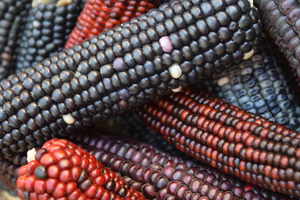5585 Guilford Road • Madison, WI 53711-5801 • 608-273-8080 • Fax 608-273-2021
www.agronomy.org
Twitter | Facebook
NEWS RELEASE
Contact: Hanna Jeske, Associate Director of Marketing and Brand Strategy, 608-268-3972, hjeske@sciencesocieties.org
Pilgrims and soil: what’s the connection?
Nov. 15, 2016 – Imagine arriving in a new land only to discover your food supply plans have fallen through. Our modern Thanksgiving celebration, often sourced from grocers and accessorized with store-bought decor, is missing these “dirty” details. The Soil Science Society of America (SSSA) November 15 Soils Matter blog post explains farming challenges the Pilgrims faced, and their survival thanks to help from the Wampanoag Native Americans.
 The early immigrants found unfamiliar conditions in their new setting:
The early immigrants found unfamiliar conditions in their new setting:
- They had few farming skills;
- The soil was shallow, sandy, and stony;
- They did not have draft animals to help cultivate the soil;
- The soils were quick to dry out, had few nutrients, and little organic matter.
“For those first Pilgrims, getting to that bountiful harvest was a huge feat,” says blog author Tom Sauer, USDA-ARS. “They wisely accepted the guidance of the Wampanoag…to supplement their lack of knowledge and skills in vegetable and crop production.”
To read the entire blog post, visit https://soilsmatter.wordpress.com/2016/11/15/what-type-of-farming-challenges-did-the-pilgrims-face/.
Follow SSSA on Facebook at https://www.facebook.com/SSSA.soils, Twitter at SSSA_Soils. SSSA has soils information on www.soils.org/discover-soils, for teachers at www.soils4teachers.org, and for students through 12th grade, www.soils4kids.org.